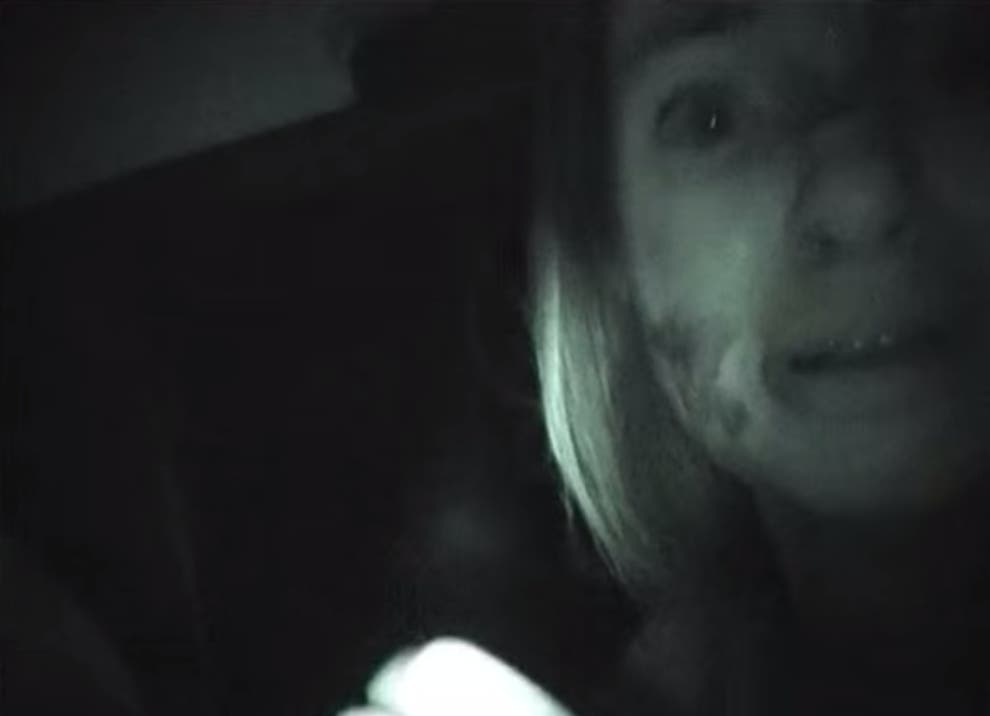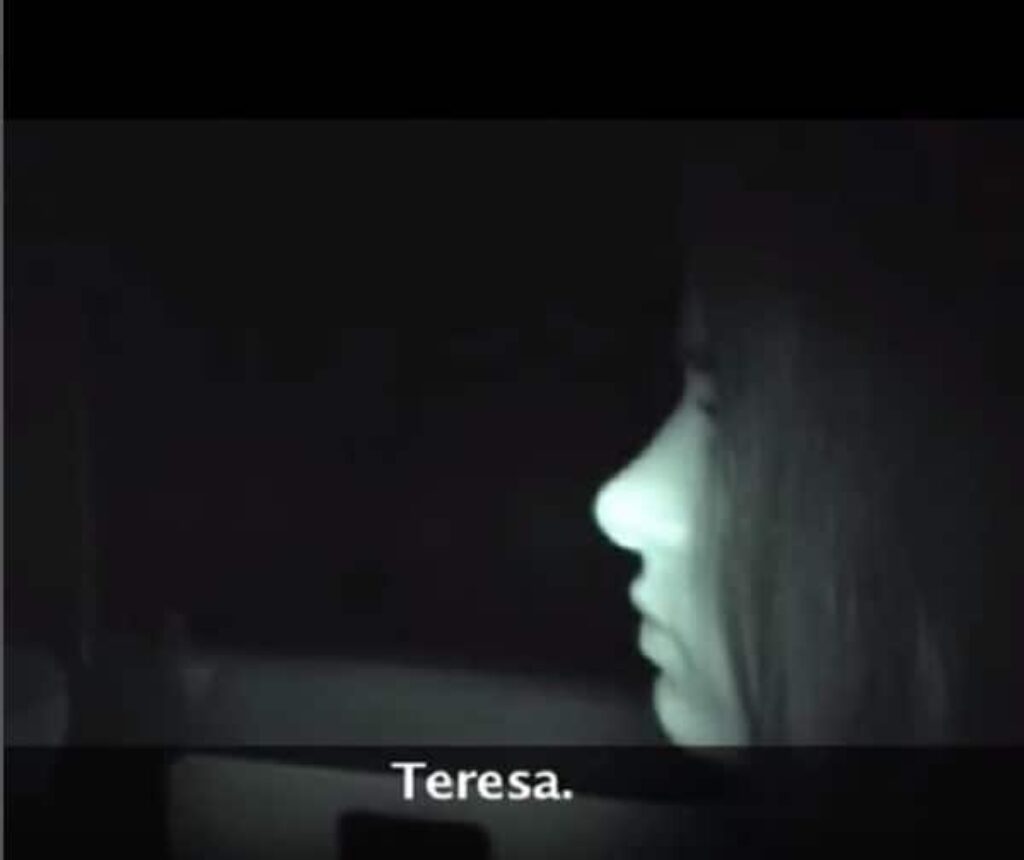Teresa Fidalgo: Is The Ghost Story Real? Debunking The Myth!
Is there a spectral hitchhiker haunting the roads of Sintra, Portugal, or is the story of Teresa Fidalgo nothing more than a chilling fabrication? The enduring tale of Teresa Fidalgo, a purported ghost said to haunt those who travel the roads where she met her demise, is, in fact, a meticulously crafted urban legend.
The digital age, with its capacity to disseminate information at an unprecedented rate, has become fertile ground for the proliferation of myths and urban legends. The Teresa Fidalgo story, which first gained traction in 2003 and saw a resurgence in popularity on platforms like YouTube, TikTok, and Instagram, exemplifies this phenomenon. The narrative revolves around a young woman named Teresa Fidalgo, who is said to have perished in a car accident along a road in Sintra, Portugal. According to the legend, her spectral form now appears to unsuspecting travelers, leading to misfortune or even death for those who encounter her. Variations of the tale include the claim that sharing a video related to Teresa Fidalgo will bring the viewer under her haunting gaze. This chain-letter-esque element contributed significantly to the legend's viral spread, as users felt compelled to share the content out of a sense of obligation or fear.
| Aspect | Details |
|---|---|
| Name | Teresa Fidalgo |
| Known For | Subject of an internet urban legend, the "ghostly hitchhiker" of Sintra |
| Origin | Fictional character from a 2003 Portuguese short film, "A Curva" |
| Alleged Cause of Death | Car accident |
| Location of Alleged Haunting | Roads in Sintra, Portugal |
| Nature of Legend | Ghostly apparition, potentially appearing as a hitchhiker |
| Viral Spread | Through a video titled "A Curva" and associated chain messages. |
| Authenticity | None. The story is entirely fictional. |
| Impact | Inspired fear, influenced online sharing, and served as the basis for various online scares. |
| Related Themes | Ghost stories, Chain messages, Urban legends, internet hoaxes |
| Reference | Wikipedia - A Curva |
The genesis of the Teresa Fidalgo legend can be traced back to the Portuguese short film "A Curva," directed by David Rebordo. Released in 2003, the film depicts a group of friends encountering a ghostly hitchhiker, later revealed to be Teresa Fidalgo, who perished in a car crash. While the film itself was a work of fiction, its presentation, coupled with the increasing prevalence of the internet, fostered an environment where the narrative could be readily adopted and shared as a true account. This paved the way for the story to become an integral part of the digital landscape, circulating across various social media platforms. The chilling narrative was further amplified by its viral nature, spreading across Instagram, WhatsApp, and Facebook, fueled by the very real human reactions of fear and concern.
The evolution of the Teresa Fidalgo story is a prime example of how urban legends can adapt and thrive in the digital realm. The initial video, a carefully crafted piece of cinematic storytelling, served as the cornerstone of the myth. As the video gained traction, it was subsequently modified, re-edited, and re-uploaded across various platforms. With each iteration, the narrative evolved, incorporating different elements and nuances. The message was further enhanced by accompanying texts or captions. These often warned viewers of the potential repercussions of not sharing the video, thus leveraging the effectiveness of the chain letter. This inherent structure of the story, coupled with its themes of loss, the unknown, and the supernatural, proved particularly effective in captivating audiences, leading to the story's continued propagation across the internet.
One recurring element within the Teresa Fidalgo legend is the purported threat of supernatural consequences for those who view or share the video. This element tapped into the fundamental human desire for safety and the avoidance of misfortune. By instilling a sense of fear and obligation, the story compelled individuals to participate in its propagation, turning them into unwitting actors in the spread of the myth. This is a key component in many urban legends, as it ensures the narratives survival and continued relevance. The belief that something terrible might occur if the video is not shared transforms the audience into active participants, contributing to the story's virality and overall reach.
The story is not confined to a single language or geographic location. Its themes of a spectral figure seeking retribution for her untimely demise and the chilling power of internet-based threats resonate across cultures. The simple message "share this or risk being haunted" transcends linguistic barriers and taps into universal fears, further contributing to the legends persistence. The use of social media has helped to keep the legend alive as well. The video, which claimed to depict the ghostly apparition of the Portuguese woman, was re-posted on various social media sites. This viral cycle of reposting and resharing the video kept the story circulating. This allowed the myth to reach new audiences, and ensuring its prolonged presence across the internet.
Many aspects of the Teresa Fidalgo tale have led to confusion. The story's presentation and the film's realistic aesthetic have, at times, blurred the line between fiction and reality. The film's production value and the convincing acting of the cast contributed to the belief in the ghost's existence. Over time, the story began to accumulate secondary narratives, such as supposed sightings of Teresa Fidalgo. The incorporation of these supporting details cemented the story as a genuine urban legend, which helped its spread. The use of these elements ensured that the story took root in the collective consciousness of internet users.
The enduring appeal of the Teresa Fidalgo story, despite its proven lack of authenticity, speaks to the power of storytelling and the human fascination with the supernatural. The legend offers a combination of elements that make it attractive to a broad audience. The story evokes a sense of intrigue. The simple core narrative allows people to adapt and share it easily. The story's mysterious themes are particularly captivating to younger audiences. The rise of this story also underlines the importance of critical thinking and media literacy in the digital age. In an online environment awash with information, the ability to evaluate sources, distinguish between fact and fiction, and discern the intent behind viral content is crucial.
The story's lasting presence on social media, with various iterations and re-tellings, demonstrates that the legend still resonates. This prolonged existence makes it important to understand the story and its influence on how we interact with online narratives. It also shows the importance of exercising caution when encountering unverified information, especially when presented as sensational or threatening. The tale of Teresa Fidalgo serves as a potent reminder of how easily narratives can be constructed, disseminated, and adopted as fact in the digital sphere.
The success of the Teresa Fidalgo story has spawned parodies and other creative endeavors, demonstrating its cultural impact. Artists, filmmakers, and social media users have used the legend as a creative prompt, producing their own interpretations and tributes. This cultural influence demonstrates the legend's ability to inspire artistic expression. This ability to transcend its initial origins, to become a multifaceted cultural phenomenon, shows the significant and enduring influence of the story in the digital landscape.
In conclusion, the story of Teresa Fidalgo is not a historical account but a work of fiction that has gained popularity across the internet. It started with a short film and has been adapted, re-shared, and re-imagined to keep the story alive. Understanding the origins of the story and the factors that contributed to its popularity provides insight into the power of urban legends and the influence of the internet on how we understand the world. This story serves as a lesson. It serves to highlight the importance of verifying information online and approaching viral content with a critical mindset.


